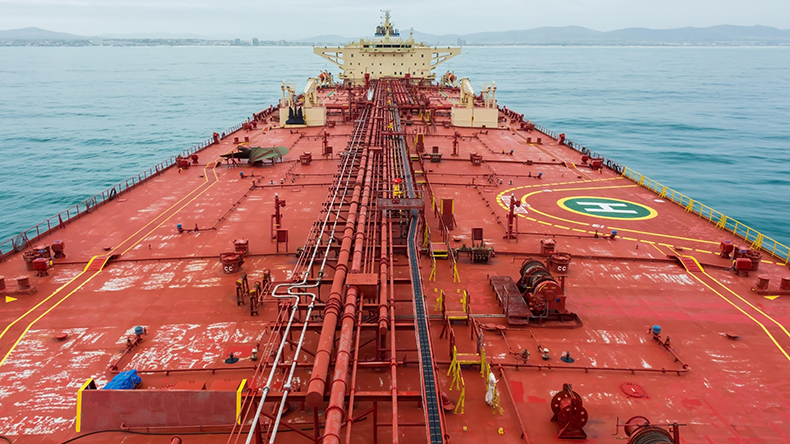War risk market split on covering US- and UK-linked vessels for Red Sea transits
‘We have increased our threat assessment towards vessels representing states engaged in the anti-Houthi coalition and it seems apparent US/UK vessels are the most desirable targets right now,’ one underwriter argues
Some underwriters fear Yemeni rebels will single out American and British tonnage in retaliation for airstrikes, with others still ready to quote
The marine war risk market is split over providing insurance for US- and UK-linked vessels making Red Sea transits, with some underwriters continuing to quote and others unwilling to offer cover at all.
This development came in response to differing assessments of a likely Houthi response to the recent US and British airstrikes on Yemen, with a growing feeling US and UK ships could be singled out in consequence.
Most insurers have already been asking for a warranty of no Israeli involvement since the attacks started last November and a number are now seeking warranties of no US or UK ownership or interest and no calls to Israeli ports, either forthcoming or in the past 12 months.
Some vessels continuing passage through the Red Sea are broadcasting on Automatic Identification System they are not heading for Israel, in line with Houthi demands. Many owners are also said to be turning down charters, citing fears for the safety of ships and crews.
Where cover is available, rates remain roughly where they were two weeks ago, at up to 1% of hull value in some cases, according to market sources. That is now likely to be higher for US and UK tonnage.
On paper, the pricing represents an additional $1.3m on the cost of a single trip for a brand new VLCC booked to load a consignment of crude from a Saudi west coast port. That is around 100 times higher than where they were before Houthi missile and drone attacks on merchant shipping began last November.
Much of the Red Sea has long been designated a listed area by the Joint War Committee of Lloyd’s and London companies market insurers, giving underwriters the option but not the obligation to levy additional premiums (APs) over and above the basic annual rate for war risk cover.
In practice, relative quiet in the region in recent years has seen insurers either waive the AP altogether or levy it at a nominal 0.l% or 0.05%.
But the outbreak of hostilities between Israel and Gaza and subsequent Yemeni involvement has pushed rates up 100 times over in some instances.
The big caveat is war risk cover is bespoke and substantial no-claims bonuses and volume discount are widely available, so some owners will be able to cut significantly better deals.
The other proviso is levels of enquiry remain low, with oil majors including Shell, BP and Adnoc joining boxship operators in diverting round the Cape of Good Hope to avoid the threat of attacks altogether.
That left some sources saying they could not comment on Red Sea rates right now, because they do not have any contracts to comment on.
The cost of going the long way round typically adds up to 11,000 nautical miles and a week to 10 days’ transit time to east-west voyages. The extra fuel and crewing costs can come in at as much as $2m. But the outlay is mitigated by the savings on war risk premiums and Suez Canal transit fees. In some cases, there may be little in it either way in simple dollar terms.
It is for owners to decide which way the proposition stacks up and an increasing number are taking the South Africa option.
Lloyd’s List previously reported owners of vessels perceived to have Israeli connections are finding it increasingly difficult to secure cover. It now seems American and British owners are having similar experiences.
One London underwriter said in an email it has no appetite at present to insure vessels even remotely linked to Israel, the US or Britain for passage through the Red Sea, due to what it described as the obvious risk.
“There are obviously a lot of stakeholders to shipping,” it added. “Apart from the owner of the vessel, there are charterers, sub-charterers, technical managers and commercial managers, all of which could raise the risk profile of the transit if they are connected to particular nationalities.”
Another London underwriter broadly concurred with that assessment. But some brokers offered a more acerbic take.
“This may be BS. My understanding is things haven’t changed. People who aren’t market leaders are trying to push this, but most leaders aren’t differentiating,” one commented. “The issue is, what makes a vessel US/UK? Flag? Ownership? They’re all in touch with one or both countries in some way, shape or form.”
Another broker flatly rejected the suggestion there was any price discrimination between American and British owners and other nationalities.
But a Nordic underwriter added: “The short story right now is traffic in the Red Sea is significantly reduced and there’s an upward pressure on rates for operations that still send their vessels through. We have increased our threat assessment towards vessels representing states engaged in the [anti-Houthi] coalition and it seems apparent US/UK vessels are the most desirable targets right now.
“I am not aware if any rate discrimination against US/UK flagged vessels, as we only have a limited amount of such vessels in our portfolio.”
This article first appeared in Lloyd’s List, a sister publication of Insurance Day






